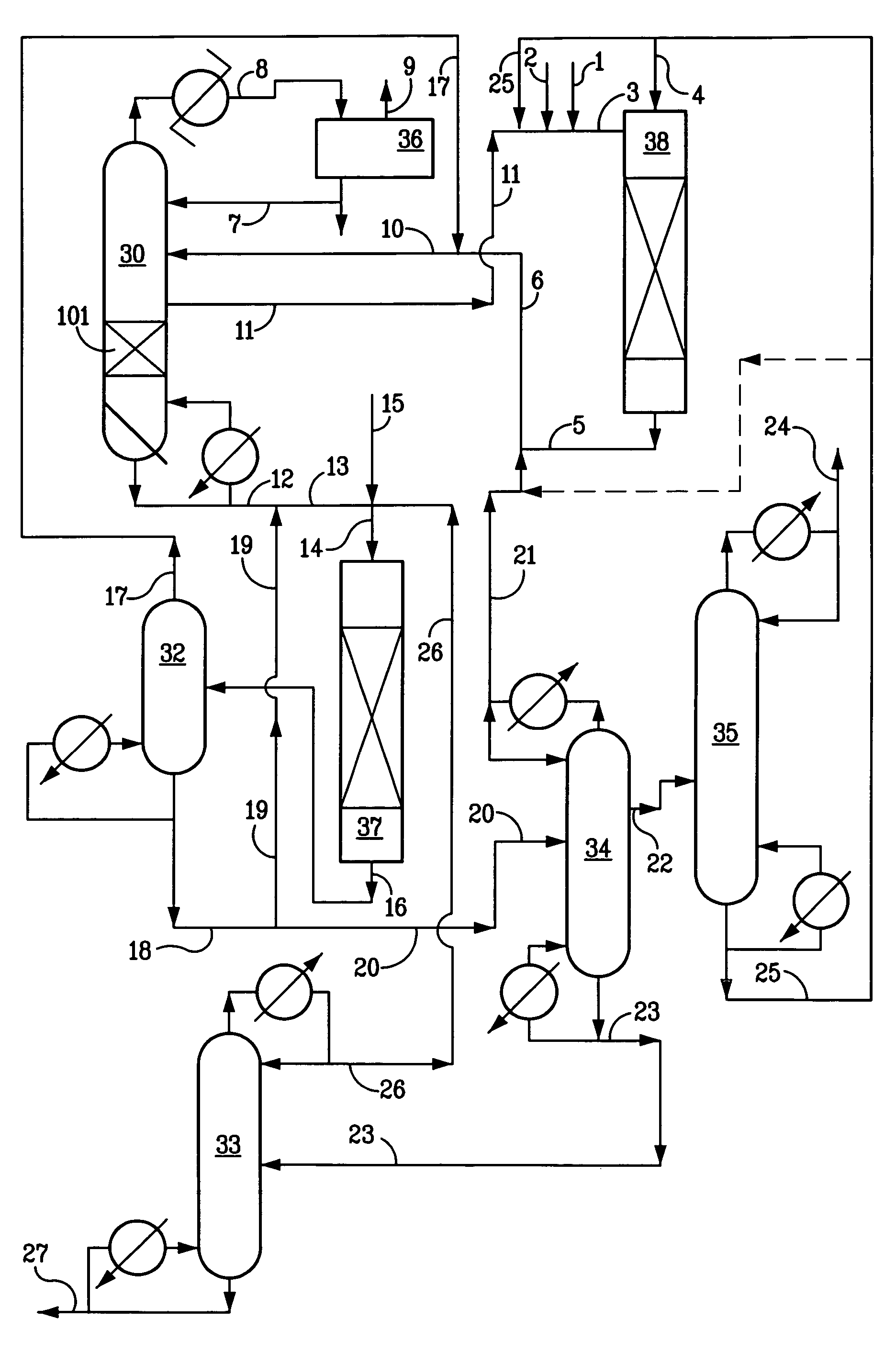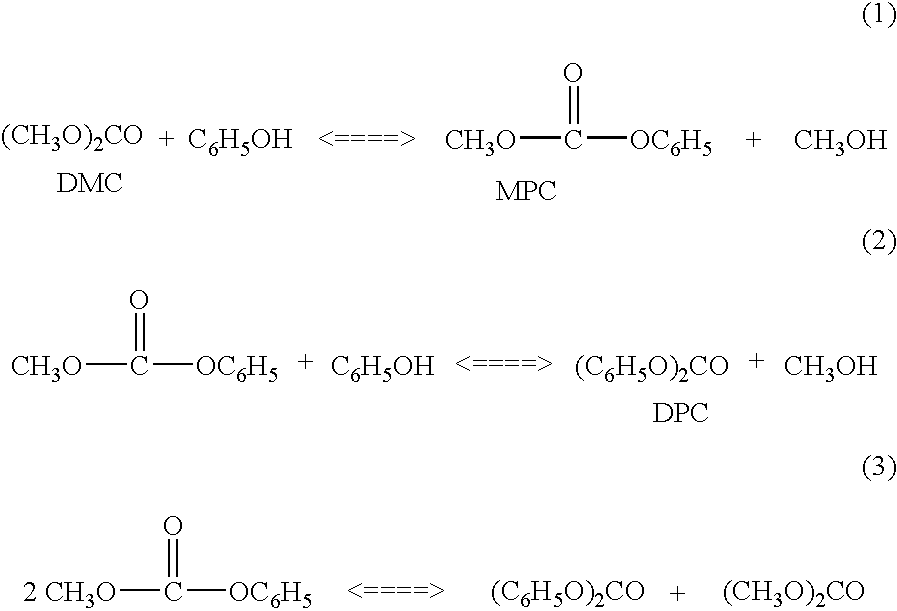Process for producing organic carbonates
a technology of organic carbonates and carbonates, which is applied in the direction of catalyst regeneration/reactivation, physical/chemical process catalysts, carbonic/haloformic acid esters purification/separation, etc., can solve the problem that all heterogeneous catalysts eventually deactivate, and achieve high conversion
- Summary
- Abstract
- Description
- Claims
- Application Information
AI Technical Summary
Benefits of technology
Problems solved by technology
Method used
Image
Examples
control example 1
[0090]A titanium oxide (9.2 wt %) catalyst supported on silica was prepared according to the prior art (WO 03 / 066569). 3.839 Ti(OC4 Hg-n)4 was dissolved in 90 ml dry toluene. Granular silica (+8 mesh, 655 ppm Na by weight, 300 m2 / g BET SA and 1 cc / g PV) was pre-dried at 330° C. for 2 hrs in air. The titanium butoxide solution was refluxed with 25 ml (9.159) of the dried silica granules in boiling toluene solution in a 200 ml flask with a condenser. After about 6 hours reflux, the excess toluene in the flask was boiled off from the flask. The titanium butoxide supported silica was recovered from the flask and dried at 120° C. in a vacuum oven for 1.5 hours. The dried silica was calcined at 500° C. for to 2 hours. The calcined product was paper white granule. The total catalyst weight was 9.67 g. This is catalyst A.
example 2
[0091]A mixed niobium / titanium oxide catalyst supported on silica was prepared according to the invention. 0.592 g of Nb(OC4 H9-n)5 was dissolved in 80 ml toluene. The granular silica used in the Control Example 1 is dried at 320° C. for 2 hours in air. 25 ml (9.27g) of this dried silica is refluxed with the above niobium butoxide solution. After 5.5 hours reflux in the same fashion as the Control Example 1, the excess toluene was drained out from the flask. A water solution in methanol prepared by mixing 0.209 g of water with 120 ml methanol was poured into flask and then the solution was refluxed in boiling methanol for an hour. The excess of methanol was drained out from the flask. A titanium tetrabutoxide solution prepared by dissolving 3.56 g of titanium butoxide in 90 ml toluene was poured into the flask and then the content in the flask was refluxed in boiling toluene for 5.5 hours. The excess toluene in the flask was boiled off from the flask. The material in the flask was r...
example 3
[0092]In this example, treated silica was used to prepare a mixed titanium / niobium oxide catalyst supported on silica. A mixed niobium / titanium oxide catalyst supported on treated silica was prepared according to the invention. The same granular silica of Control Example 1 was used to prepare the treated silica of this example. The granular silica(40.56 g) was treated with a sodium hydroxide solution prepared by dissolving 8.059 NaOH in 226 g water at room temperature for 7 minutes with stirring. The treated silica was washed with cold water thoroughly and then with hot water (about 65° C.) several times to remove trace of sodium on silica. The treated silica was dried at 150° C. for 2 hours and then calcined at 325° C. for 2 hours. This calcined silica contained 300 ppm Na by weight. A niobium alkoxide solution was prepared by dissolving 0.844 g of Nb(OC4H9-n)5 in 80 ml toluene. 8.46 g of the treated silica was refluxed in the above niobium butoxide solution for 3 hours in a flask ...
PUM
| Property | Measurement | Unit |
|---|---|---|
| mole ratio | aaaaa | aaaaa |
| wt % | aaaaa | aaaaa |
| mole ratio | aaaaa | aaaaa |
Abstract
Description
Claims
Application Information
 Login to View More
Login to View More - R&D
- Intellectual Property
- Life Sciences
- Materials
- Tech Scout
- Unparalleled Data Quality
- Higher Quality Content
- 60% Fewer Hallucinations
Browse by: Latest US Patents, China's latest patents, Technical Efficacy Thesaurus, Application Domain, Technology Topic, Popular Technical Reports.
© 2025 PatSnap. All rights reserved.Legal|Privacy policy|Modern Slavery Act Transparency Statement|Sitemap|About US| Contact US: help@patsnap.com


